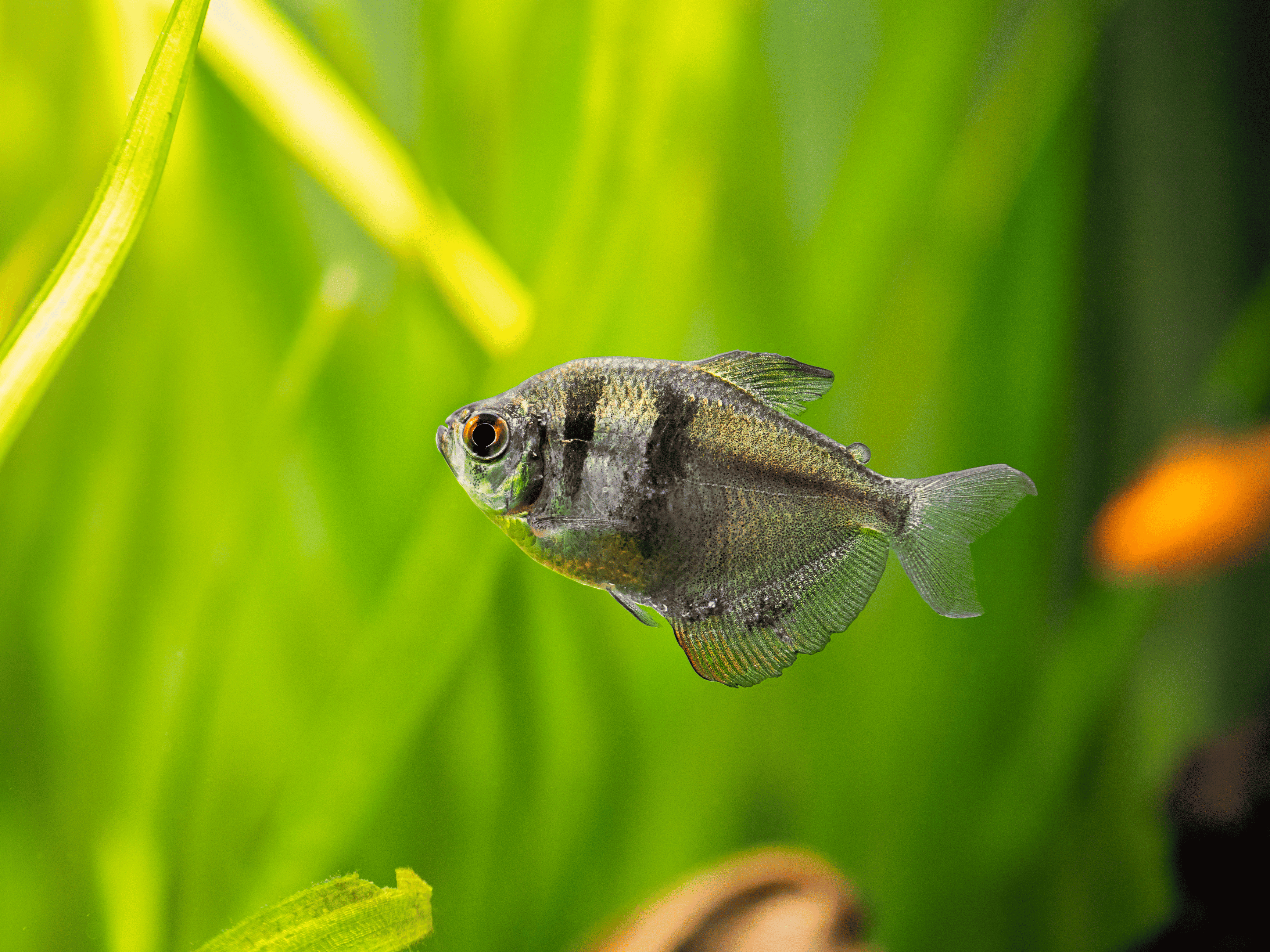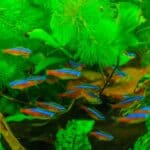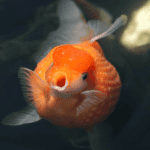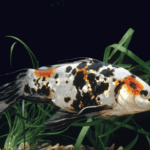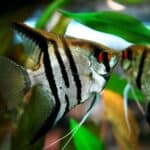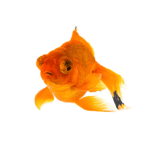The Black Skirt Tetra is a striking species, beloved by freshwater aquarium enthusiasts around the globe. This captivating fish is known for its moody appearance and social tendencies. But, there’s much more to this species than its enchanting allure.
Characteristics of the Black Skirt Tetra
The Black Skirt Tetra, scientifically named Gymnocorymbus ternetzi, is distinguished by its trademark appearance. It boasts a robust body with a deep gray to black coloration, gracefully overlaid by a translucent sheen. The fish’s namesake feature, its large black dorsal and anal fins, resemble a flowing skirt in motion, adding a dash of flair to any aquarium setting.
- Size: Adult Black Skirt Tetras can reach up to 3 inches in length.
- Shape: They possess a stocky, oval-shaped body.
- Color: As the name suggests, they exhibit a dark color palette, with gray-black hues enveloping their body.
- Fins: Two large, flowing fins are present, resembling a skirt – these are their signature feature.
The sex of Black Skirt Tetras can be distinguished with relative ease. Males are typically slimmer with slightly more color, while females are a bit plumper and less vibrant.
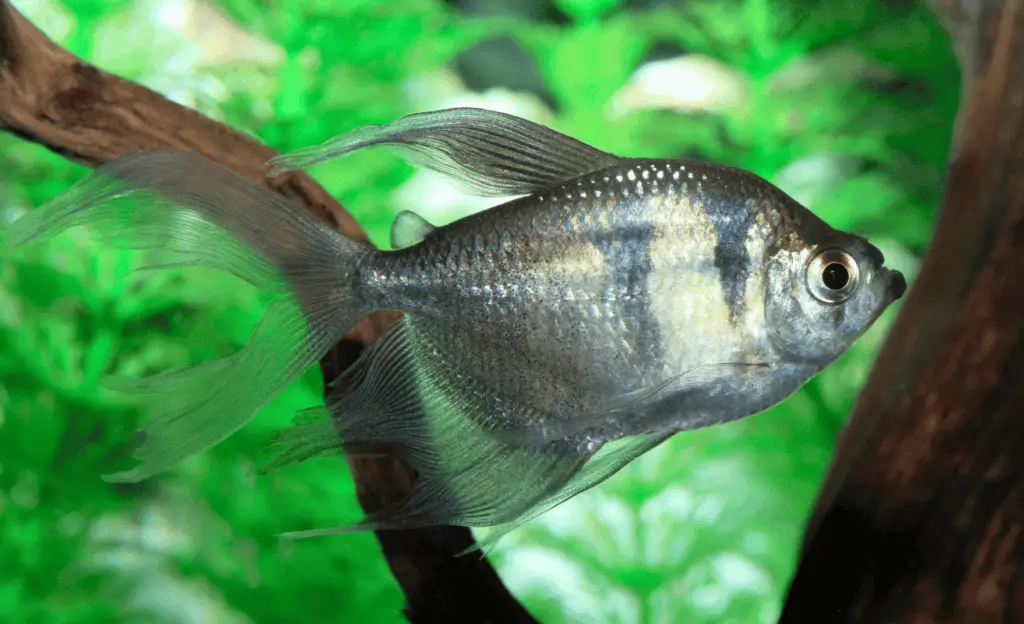
Habitat and Lifespan
The Black Skirt Tetra originates from South America, specifically the Paraguay and Guaporé River basins. They inhabit slow-moving streams and tributaries, often preferring areas with dense vegetation.
In their natural environment, these fish can live for up to 5 years. However, with optimal care in a home aquarium, their lifespan can extend up to 7 years.
Diet and Feeding
Black Skirt Tetras are omnivorous by nature. This translates into a diverse diet in aquarium conditions, often comprised of:
- Flake food
- Frozen or live food (like brine shrimp or bloodworms)
- Vegetable matter
Feeding them a balanced diet ensures their health and enhances their coloration. It’s recommended to feed them small amounts twice a day, and to offer variety to prevent nutritional deficiencies.
Aquarium Requirements
Setting up an appropriate environment is essential for the Black Skirt Tetra’s well-being. Here are some considerations:
| Requirement | Specification |
|---|---|
| Tank size | Minimum 20 gallons for a group |
| Water pH | 6.0 to 7.5 |
| Water hardness | 4-8 dGH |
| Temperature | 70-85°F (21-29°C) |
| Lighting | Moderate |
| Substrate | Fine sand or small gravel |
| Decor | Plants, rocks, and driftwood for hiding spots |
Remember, Black Skirt Tetras are schooling fish and should be kept in groups of at least six. They thrive in a community tank environment, provided they are with compatible species.
Compatible Tank Mates
While Black Skirt Tetras are generally peaceful, they can nip at the fins of slow-moving, long-finned fish due to their playful nature. Compatible tank mates could include:
- Other types of tetras (e.g., Neon Tetras, Cardinal Tetras)
- Corydoras Catfish
- Guppies
- Mollies
- Dwarf Gouramis
- Certain types of Barbs (like the Cherry or Tiger Barb)
Avoid pairing with Angelfish or Betta fish as their long fins can be tempting targets for nipping.
Breeding Black Skirt Tetras
Breeding Black Skirt Tetras in home aquariums can be a bit challenging due to their specific requirements. They are egg scatterers and will need a separate breeding tank with ample plant cover for egg-laying. It’s recommended to separate parents from the eggs post-spawning to prevent them from eating their offspring.
The eggs typically hatch within 24-36 hours, and the fry start swimming freely after 3-5 days. They should be fed infusoria or other suitable fry food until they grow large enough to consume standard meals.
Health Concerns
Black Skirt Tetras are hardy fish but, like all aquarium inhabitants, they’re prone to certain health issues:
- Ich: A common parasitic disease, recognizable by white spots on the fish’s body and gills.
- Fin Rot: A bacterial or fungal infection, usually resulting from poor water conditions.
- Neon Tetra Disease: Despite the name, this disease can affect Black Skirt Tetras. It is characterized by cyst-like lumps, curvature of the spine, and a loss of color.
Maintaining good water quality and providing a balanced diet are your best preventive measures against these health concerns. If your fish becomes sick, consider consulting with a vet or a professional aquarist for guidance.
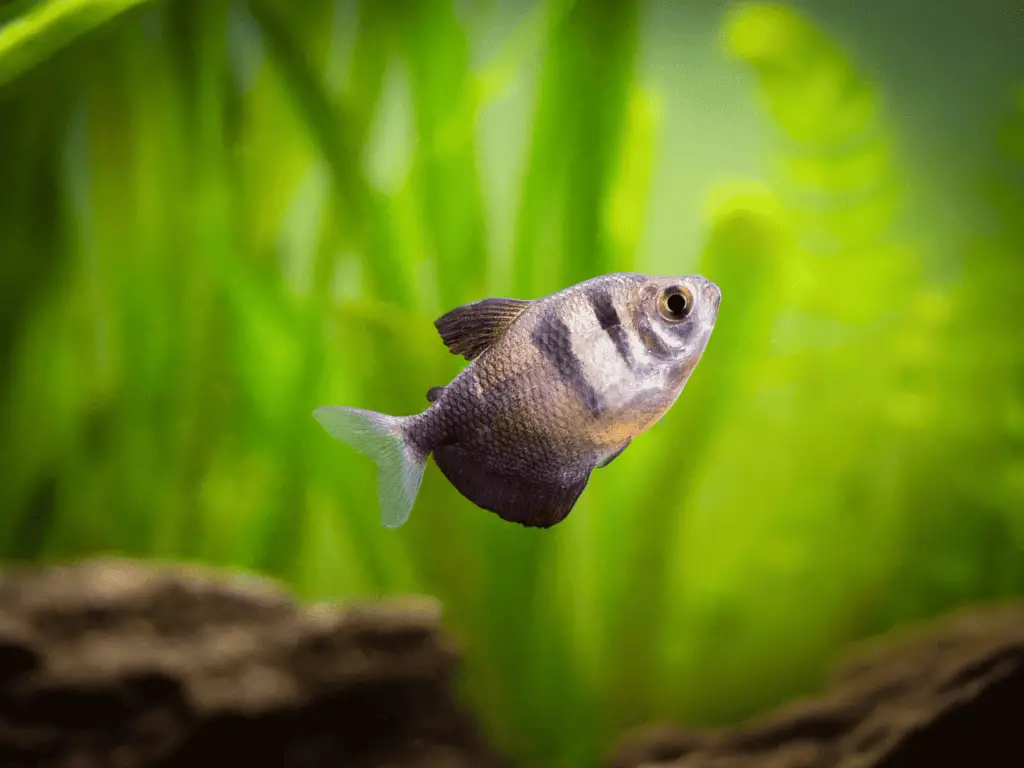
Behavior and Temperament
The Black Skirt Tetra is an active, playful species that enjoys schooling with its own kind. These fish are not typically aggressive, but they do have a habit of fin-nipping, especially when they feel threatened or bored. Providing them with enough companions of their own species (a minimum of six) will help keep this behavior in check. Their active, swarming behavior creates a dynamic spectacle in the aquarium, making them a favorite among enthusiasts.
Ideal Water Conditions
Black Skirt Tetras are freshwater fish that thrive in conditions that mimic their natural habitat. Soft, slightly acidic to neutral water is ideal, but they can tolerate a reasonable range of water parameters due to their hardiness. Regular water changes (at least once every two weeks) are crucial to remove toxins and maintain a healthy environment. As with any species, sudden changes in water parameters should be avoided to prevent stress and potential health problems.
The Importance of Aquarium Décor
For a Black Skirt Tetra, an aquarium should be more than just a tank with water. Adding live plants, rocks, and driftwood can provide hiding spots and make the fish feel secure, thus reducing stress. Live plants also contribute to maintaining water quality by absorbing nitrates. The use of subdued lighting will further help replicate their natural environment and encourage their natural behaviors. Aquascaping, or the art of arranging aquatic plants, rocks, and substrates in an aesthetically pleasing manner, can also greatly enhance the overall appeal of a Black Skirt Tetra aquarium.
Handling and Care
The Black Skirt Tetra is not a high-maintenance fish, but it does require certain care to thrive. Overfeeding is a common mistake that should be avoided; small meals twice a day is more than enough. Regular monitoring of the tank environment is critical to notice any change in behavior or appearance of the fish, as these could be signs of illness. As with all fish, it’s best to handle Black Skirt Tetras as little as possible to minimize stress.
Tips for Beginners
If you’re just getting started with your first aquarium, the Black Skirt Tetra is an excellent choice. Their hardiness and adaptability make them forgiving for those still learning the ropes of aquarium care. Here are some tips for beginners:
- Ensure you have a large enough tank before buying your fish.
- Let your tank cycle and establish a stable environment before introducing any fish.
- Keep them in a sizable group to encourage natural schooling behavior.
- Monitor water parameters regularly and perform frequent water changes.
- Learn the signs of common fish illnesses to catch any potential problems early.
By paying attention to these details, even novice aquarists can provide a nurturing environment for Black Skirt Tetras to thrive.
Conclusion
The Black Skirt Tetra is a fascinating addition to any freshwater aquarium due to its striking appearance and lively behavior. They’re relatively low-maintenance and can thrive under the right conditions. Whether you’re a beginner or a seasoned aquarist, you’ll find the Black Skirt Tetra a rewarding species to care for and observe. With this guide, you’re well on your way to providing the ideal environment for these delightful, skirt-swishing inhabitants.
Frequently Asked Questions About Black Skirt Tetras
1. Are Black Skirt Tetras easy to care for?
Yes, Black Skirt Tetras are considered relatively easy to care for, making them suitable for beginners as well as experienced aquarium owners. They are hardy fish and can adapt to a range of water conditions.
2. Can Black Skirt Tetras live alone?
Black Skirt Tetras are schooling fish and prefer to live in groups of six or more. Keeping them in groups not only ensures their happiness but also helps reduce instances of fin-nipping behavior.
3. What should I feed my Black Skirt Tetra?
Black Skirt Tetras are omnivores and thrive on a varied diet. You can feed them flake food, live or frozen food like brine shrimp or bloodworms, and vegetable matter.
4. How big should my aquarium be for Black Skirt Tetras?
A minimum of 20 gallons is recommended for a group of Black Skirt Tetras. This provides enough space for them to swim freely and exhibit their natural behaviors.
5. What other species are compatible with Black Skirt Tetras?
Black Skirt Tetras can be kept with other tetras, Corydoras Catfish, Guppies, Mollies, Dwarf Gouramis, and certain types of Barbs. Avoid pairing them with long-finned species like Angelfish or Betta fish, as they can be prone to fin-nipping.
6. How long do Black Skirt Tetras live?
In their natural environment, these fish can live for up to 5 years. However, with optimal care in a home aquarium, their lifespan can extend up to 7 years.
7. What are some common health concerns for Black Skirt Tetras?
Some common health concerns include Ich, Fin Rot, and Neon Tetra Disease. Maintaining a clean environment and a balanced diet are the best preventive measures against these diseases.
8. Can I breed Black Skirt Tetras at home?
Yes, you can, but breeding Black Skirt Tetras at home can be challenging. They require specific conditions, and it’s best to move them to a separate breeding tank. Post-spawning, it’s advisable to remove the parents to prevent them from eating the eggs.
9. How can I distinguish between male and female Black Skirt Tetras?
Males are typically slimmer with slightly more color, while females are a bit plumper and less vibrant.
10. How often should I feed Black Skirt Tetras?
It’s recommended to feed Black Skirt Tetras twice a day with small amounts of food. Overfeeding should be avoided to maintain a clean water environment and healthy fish.
